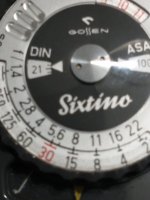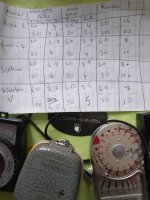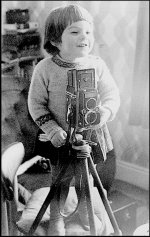Asha
Blithering Idiot
- Messages
- 11,274
- Name
- Asha
- Edit My Images
- Yes
Yes I would suggest a serious metering issue of at least a couple of stops ( which would relate to a 400 as against 100 asa meter setting)What have I got wrong here? Am I right in thinking severe underexposure? Only 1 of the 12 seems anywhere near right (house- greenhouse) and one or 2 others may be saveable. I think I dev'd the Fomapan 100 correctly for 6.5 mins in ID-11. The light was poor when I took these but something is seriously amiss. I'm off to check I didn't have my light meter set for 400 or something.
View attachment 375270
View attachment 375271
View attachment 375272
Positive is I got it onto the spiral easily and I got the start line on the backing paper in the right place for the 1st time! Good job I went with my cheapest film.
EDIT, dont forget there are many other camera/ user errors to consider too such as shutter speed, aperture or filters
Last edited:








